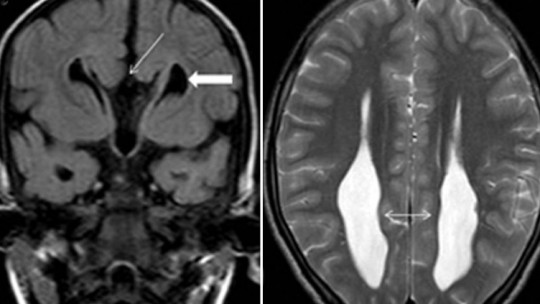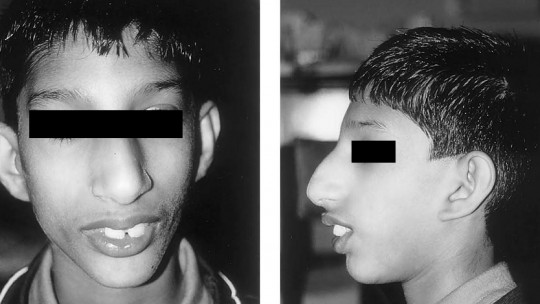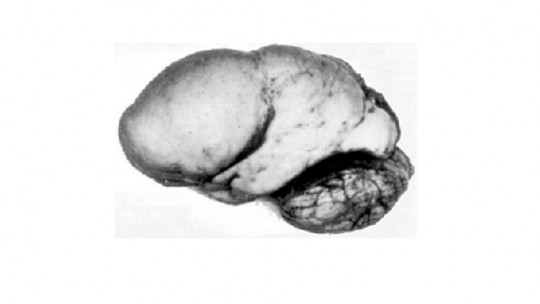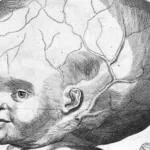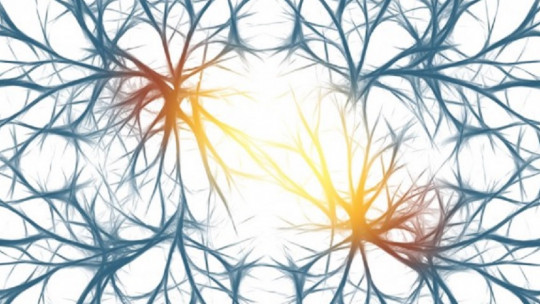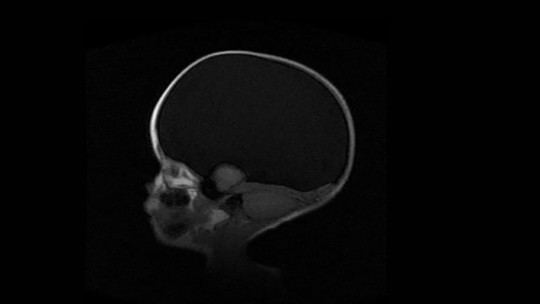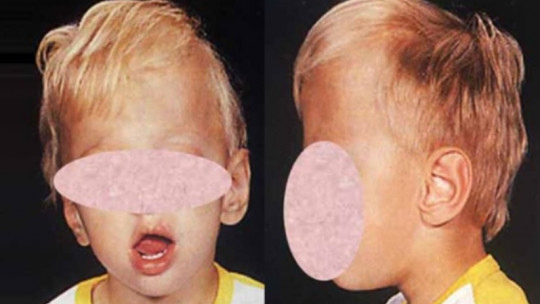
The maturational development of the brain is a complex and delicate process. Although human beings are born with a very large head in relation to the body (especially if we compare ourselves to other animals), throughout the first decades of our life our nervous system must still grow and develop so that we can reach a healthy adulthood.
However, during this process there are many things that could go wrong and, although they are infrequent, if they do appear, they greatly influence our lives. Macrocephaly is an example of this..
What is macrocephaly?
Macrocephaly is a biological alteration by which the circumference of the head is greater than expected for sex and age of a boy or girl. That is, the identification of macrocephaly is carried out by taking measurements of the perimeter of the skull and checking whether the cranial vault is larger than normal in healthy people. For this reason, macrocephaly is included within cranial growth disorders, a category to which microcephaly also belongs.
Furthermore, it is considered that for a correct study of each case of macrocephaly it does not depend only on one measurement, but rather a follow-up must be done to see how it evolves. the size of the head in relation to the rest of the body and whether the situation is getting worse over time.
This is because this proportion changes very quickly during the first months of life and, in fact, between birth and 6 years the size of the body below the neck increases at high speed.
On the other hand, the concept of macrocephaly is not a disorder in itself but rather a term used to superficially describe an alteration.
How often does it appear?
There are currently no statistics on the prevalence of macrocephaly that have been extracted from related research, but it is estimated that it is a rare malformation present in less than 5% of people.
However, as always happens in these cases, it is possible that certain poorly studied populations are more prone to suffering from these types of complications during the first months of life, perhaps due to genetic reasons or pollution. After all, during pregnancy you are very sensitive to external conditions, and small alterations can, in some cases, favor the appearance of diseases in the fetus.
Furthermore, it is believed that macrocephaly is more common in men and that it usually appears during pregnancy or in the first months of life, which is why most cases are examples of childhood macrocephaly.
Causes
Macrocephaly can be caused by a wide variety of disorders. Many times it is hereditarywhile in others it is caused by injuries or complications during pregnancy or childbirth.
For example, many cases of macrocephaly are due to a disorder known as hydrocephalusin which more cerebrospinal fluid (a substance that surrounds the brain and spinal cord) is produced than can fit inside the skull. This means that in the first months of life the walls of the skull are more “dilated” than normal to accommodate so much fluid, given that at this vital stage the head is much less hard than in adulthood.
macrocephaly It may also be due to abnormal growth of the bones of the skull or brain.which is compressed against the meninges and through it presses on the bones of the cranial vault.
Furthermore, there are other disorders in which macrocephaly can also appearsuch as neurofibromatosis, bone growth disorders, intracranial bleeding, Hurler syndrome or dwarfism.
Types of macrocephaly
There is a brief classification that serves to distinguish between different types of macrocephaly according to their causes. However, it must be taken into account that even within each type there are different variants that will depend on each individual case, such as the area in which the skull bulges the most or the areas of the brain that are most damaged.
In any case, the types of macrocephaly are the following:
Primary macrocephaly
This type of macrocephaly is characterized by being caused by an increase in the volume and weight of the brain. For example, it occurs due to abnormal multiplication of stem cells. It has genetic causes and is also known as macroencephaly.
Secondary macrocephaly
In this type of macrocephaly, the enlargement of the skull is due to biological processes that are not due to an increase in the brain itselfbut from other related substances that occupy head space. For example, hydrocephalus produces this variant.
Macrocephaly due to bone malformation
Some cases of macrocephaly are explained by abnormal bone development. For example, they may be due to premature closure of the cranial sutures, which produces a bulging caused by the abnormal development of the nervous system produced by the chain reaction of not having space to expand at a given time.
Diagnosis and associated symptoms
In many cases, macrocephaly can be detected during the gestation stage thanks to the use of ultrasound. However, in non-congenital macrocephalies this may appear somewhat later, with the manifestation of certain disorders, and is diagnosed in pediatric consultations.
Macrocephaly can present a wide variety of associated symptoms, depending on its causes and the intensity of this alteration. Among them the following stand out:
Some of These symptoms may subside over time. and depending on the intervention that is performed, although they can also become more intense, depending on the case.
Forecast
The way in which macrocephaly and its associated symptoms develop depends on the type of alteration that is producing this phenomenon.
In some cases, such as those with hydrocephalus, the life of the person may be in danger if surgery is not performed (which will consist of releasing the excess cerebrospinal fluid). In others, neither the life nor the cognitive abilities of the child will be compromised. In fact, the Cases in which macrocephaly is not associated with the appearance of mental retardation are very common.
Treatment
There is no specific treatment that aims to eliminate macrocephaly.. However, there are those that aim to intervene on the symptoms associated with the disorder that is causing this alteration.
Many of them are pharmacological and psychiatric, while others are psychological in nature and focus on the cognitive stimulation of the child.


